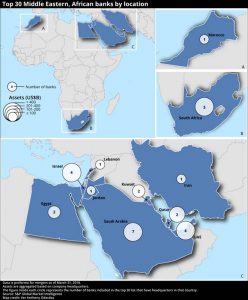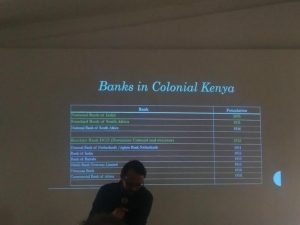KCB has started the process of integrating NBK into KCB, an exercise that is expected to be completed within the next 24 months, focusing on systems, processes, people and institutional governance.
KCB has made an all-share offer to acquire National Bank of Kenya in a not too unexpected move. Kenya’s largest bank will acquire the private, but state-controlled, NBK that was wrestling with an undercapitalized position.
KCB will acquire NBK, which has assets of Kshs 115 billion by offering 1 share for every 10 NBK shares. KCB trades at about 45 and NBK at 4.5 and this puts the offer, after conversion of NBK preference shares into ordinary ones, at about Kshs 7 billion. NBK has deposits of Kshs 99 billion and loans of Kshs 47 billion. It issued a rather late profit warning just before reporting a pretax profit of Kshs of 587 million for 2018, in March this year.
Bank shareholders: The NBK results notice also mentioned that its principal shareholders had committed to increase the capital of the bank a year ago. The Government of Kenya and the National Social Security Fund (NSSF) are significant shareholders in both KCB and NBK. At KCB the Government owns 17.5% and NSSF 6.12% while at NBK, the workers’ fund has 48% and the Government has 22.5%.
This deal presents an opportunity to rescue National Bank whose capital to asset ratio had dipped to 3%, far below the statutory minimum. The Government has grappled with how to restructure its portfolio of struggling banks and this option is a cash-less one that will see it and NSSF increase their shareholdings in KCB as other NBK shareholders gain by obtaining shares in the Kshs 714 billion KCB, the regional banking leader. Trading of shares of both banks was briefly halted on Friday morning, prior to the announcement.
Conditions of the deal to go ahead include approval by 75% of NBK shareholders (NSSF and the government own a combined 70% of the shares), while the Government is to also convert 1.135 billion preference shares in NBK into ordinary shares, representing a recapitalization of the bank by Kshs 5.7 billion. Also, if the deal is concluded, NBK will be delisted from the Nairobi Securities Exchange.
Banking M&A: KCB is now in the process of acquiring two banks – NBK and Imperial as two weeks ago the CBK and KDIC announced an improved offer deal with KCB for Imperial’s assets. The deal news comes in a week after NIC and CBA shareholders approved a merger of their banks.
It remains to be seen if Equity and Stanbic, which have expressed takeover designs on NBK over the last decade, will put in a bid for NBK. And also what will happen to other banks in similar positions of being in dire need to raise capital from their shareholders to meet statutory requirements.
EDIT October 4, 2019: KCB Group announced the completion of the successful take-over of National Bank (NBK) and listed an additional 142,979,717 shares of KCB at the Nairobi Securities Exchange for shareholders of NBK.
“We are delighted that the acquisition has been successfully concluded, creating additional value to the KCB shareholders. We continue to encourage domestic led economic growth and applaud KCB on this historic transaction” @NSE_PLC Chairman Samuel Kimani pic.twitter.com/ydzwFrocgb
— KCB Group (@KCBGroup) October 4, 2019
KCB has started the process of integrating NBK into KCB, an exercise that is expected to be completed within the next 24 months, focusing on systems, processes, people and institutional governance.
EDIT November 22, 2021: National Bank of Kenya will be de-listed from the Nairobi Securities Exchange, effective November 25, 2021.


